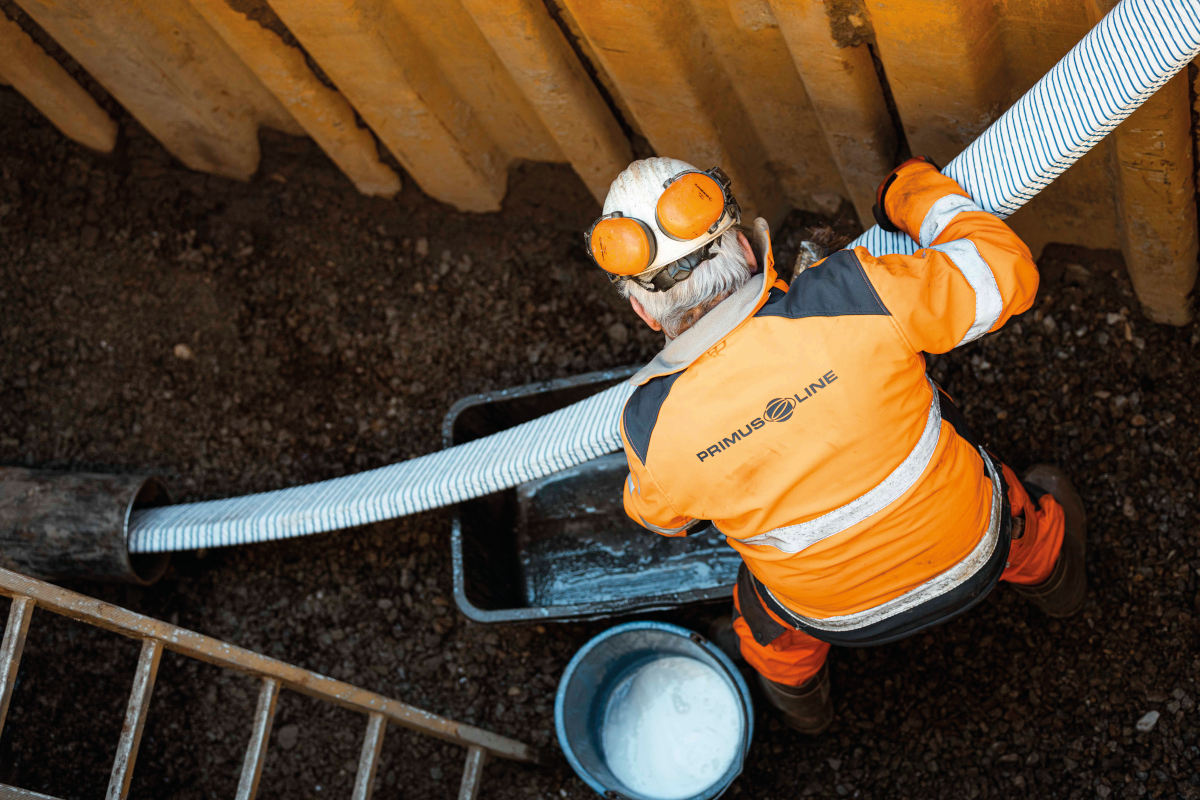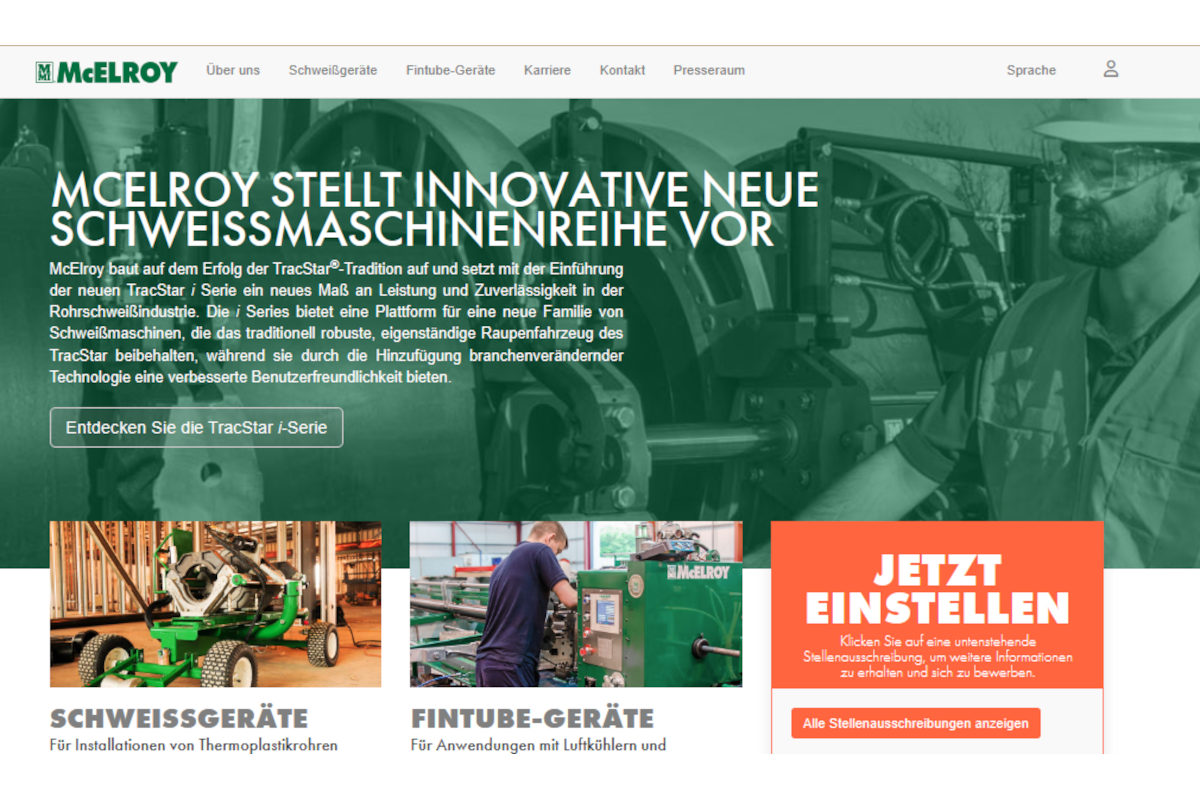Relining Project in Turkey Proves Successful

Key to the project’s success was the closerelationship between Trolining GmbH, Troisdorf, Germany, and its partner, GezerIndustrial Construction A.S., Gebze, Istanbul — together they tackled theproject, which involved rehabilitating a seawater pipeline for industrial use.Eregli is located in northern Turkey at the Black Sea.
Seawater providesa valuable contribution, in this case for a steel manufacturer as an energysource for cooling purposes. Since the 1960s, the worldwide-leading steelproducer Erdemir has transported the seawater by steel pipelines. The seawateris extracted from the Black Sea and transported over several hundred meters to asteam turbine. At the same time, the water is cleaned of living shell larvathrough filters.
Problem
The steel line in question wasunderground in a concrete tunnel that was built in the 1960s. The pipeline islocated at the shoreline from the steel plant in order for salt water to bedelivered from the Black Sea. Due to the corrosive medium, the ½-in. steel wallwas affected considerably inside and showed partial pitting. Moreover, it wasnecessary to shut down the steel line in order to clean shell incrustations. Itwas the project’s goal to solve both these problems with an appropriaterenovation technique.
From the beginning it was clear that in consideringthe conditions, application of Trolining’s basic system appeared to be the mostreasonable method to correct the problem from both a technical and economicalpoint of view.
The core of the basic Trolining system is an HDPE hosewith anchors on the outside of the liner, which serves as a spacer to the innersurface of the pipe. The annular void created by the stud texturing is filledwith a high-strength, cementitious grout leading to a statically self-supportingcomposite system.
Project Engineering
In March 2004, thefirst meeting with Erdemir took place in Turkey. In reviewing the project, itbecame evident that the pipeline that needed rehabilitation could not be shutdown for assessment of the current condition. After viewing the site plans, anevaluation of the number of bends, admissions, blind flanges, ventilation valvesand inspection covers of different kinds and sizes was made.
Since thesteel line could not be shut down prior to renovation, the exact geometry of theavailable bends remained unclear and the plans provided insufficient informationin this respect. Therefore, a flexible relining technique was chosen, enablingadaptation of the liner to the actual pipe geometry.
At this phase ofthe project, material requirements, transportation volume and the exact timeschedule was defined and an offer was presented to Erdemir. After evaluating thedifferent renovation methods, the Trolining Basic System was chosen. Thepartnership between Trolining and Gezer became official in April2004.
Project execution was scheduled between November and December 2004,enabling engineers of both companies to familiarize themselves with thetechnical conditions and develop a detailed plan for the necessarypre-construction work.
Manufacturing of the HDPE liner took place at theend of September 2004 at the Trolining production facility in Germany. For therenovation distance of 690 m, 10 separate, studded liner hoses weremanufactured; six of which were made at a length of 85 m. Transparent HDPEsealing sheets, with a wall thickness of 2.5 and 19 mm studs were considered forthis purpose. The sheets were welded together with a double-welded seam to therequested circumference.
For the bend relining, HDPE segmental plateswere chosen with a wall thickness of 8 and 13 mm studs. Connection of thelaterals to the relining system was planned with smooth, fabric-backed HDPEplates that were adhered to the steel wall of the host pipe with epoxy resinprior to liner insertion.
Nine trucks were necessary to transport thecoils, with the 10 rolled-up liner hoses, 134 tons of grout (shipped in sacks),the necessary equipment and the other material and accessories from Germany toTurkey.
Prior to liner insertion and after the scheduled shutdown of thepipeline on Nov. 1, 2004, Gezer handled several pre-construction tasks, whichincluded:
• Opening the underground pipe, which consisted ofprefabricated reinforced concrete in six areas at a length of 4 m each in orderto guarantee entry to the host pipe
• Breaking the steel line in the area ofthe openings
• Cleaning the steel line, primarily removing the shellincrustations and corrosion products
• Localizing and sealing of the corrodedand damaged spots of the steel pipe
• Welding grouting ports for grouting ofthe annular void
• Attaching fabric-backed HDPE plates in the outflow area,as well as at both ends of the planned sanitation area with the purpose to weldthe liner hoses
Since the water demand for the steel plant would be coveredby a parallel pipe during project execution, a bypass was not necessary.
Liner Insertion
After completing thepre-construction work, insertion of the Trolining liner began. One after theother, the liners were inserted through the openings. For renovation of a 255-msection length, it required insertion of three 85-m hoses.
Afterinsertion of the HDPE hoses, they were temporary sealed at each end withinflatable bags in order to lift the liners by compressed air. In this position,the liners could be connected to each other by radial extrusion welding. Theannular void between the liner and host pipe was also sealed during this step bywelding each renovation end to the HDPE plates.
The 255-m long,self-contained liner was then closed on each end by special sealing bags. Bymeans of bypass openings in the core of the sealing bag, the liner was filledwith water, building a water column of 8 m. The water column acted as internalsustaining pressure against the exterior grout pressure during annular voidgrouting, as well as as proof for leak tightness.
The 19-mm annular voidbetween liner and host pipe was filled with Trolining-Injektor via the welded-onfilling ports (DA 90 mm) on the outside of the steel pipe at a distance of 30 m.The low-viscosity grout was continuously mixed with water in four mixing unitsand filled into the annular void under hydrostatic pressure. After a 24-hourhardening phase, the supporting pressure was released and the quality of theprocess could be proven.
The four available bends were relined insegments. After adapting and welding the HDPE plates, a specially assembled,wooden casing served as support medium during the annular voidgrouting.
After re-insertion of the removed pipe parts and completelining of the entire 690-m long steel pipe with the HDPE liners, the followingwork was performed:
• Connection of the outflows by means of PEwelding
• Transition from the liner system to the steel pipe by means ofadditional steel rings at the upper and the lower head of the renovationsection
• Closing of the concrete pipe by re-insertion of the previouslyremoved concrete pre-castings
Due to the excellent knowledge in plasticwelding by the Turkish technicians, all PE connections were completed at thehighest quality standard. The local staff was readily trained in all the otherphases of the relining process and at the end of the initial two partialsections, all further work was completed by them.
After only six weeks, thepipe rehabilitation was completed and the pipeline was released to thecustomer.
Conclusion
After three days ofoperation, Erdemir shut down the line in order to review the quality of thework. No deficiencies were found.
With the success of this project, theTrolining system set another milestone in the development of its renovationtechnique — especially the choice of a local partner proved to be ideal sinceits knowledge and skills were decisive for the successful outcome of theproject.
Pre-manufactured liner hoses for renovation of large dimensionpressure pipes were successfully put into practice and proved their suitabilityin this project. On account of the high material flexibility, the applicationrange can now be extended to the drinking water area. Both Trolining and Gezercan now successfully apply their gained experience to future shoreline projectsof similar range.
Hans Jurgen Koenig is the sales and marketing director and Jens Kirste theinternational sales manager with Trolining GmbH, which is headquartered inTroisdorf, Germany.




